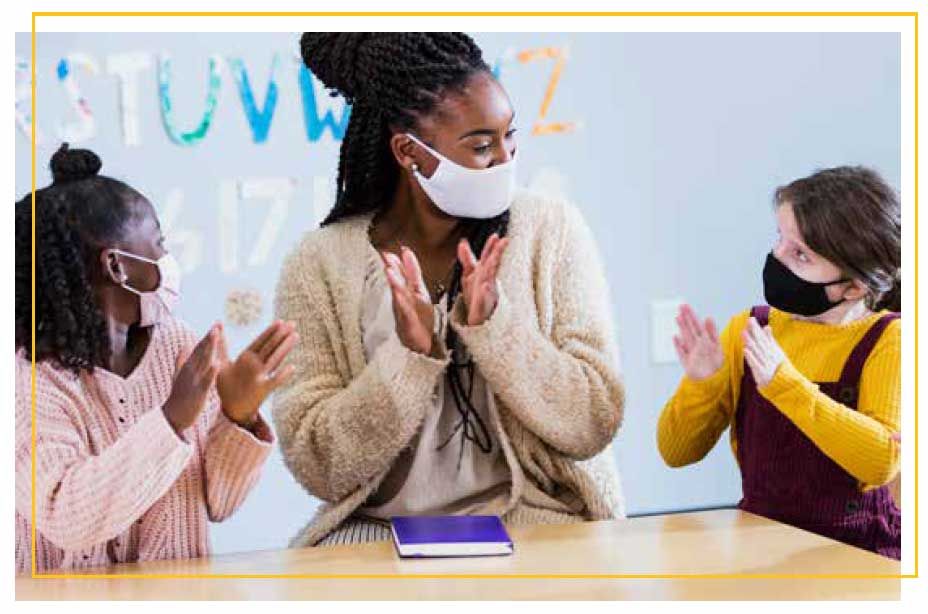 Adopt Best Practices for Instruction and Technology
Adopt Best Practices for Instruction and Technology

In-Person instruction: Learning How Much a Smile Can Mean
by Ned Hoskin
SHARE:
“I will never forget the night I got an email from a student that simply said, ‘I just can’t,’” recalled Lori Atkinson, Copenhagen Teachers Association secretary and high school English teacher.
After weeks of remote instruction under the pandemic, that student “never realized how much she needed face-to-face interaction,” Atkinson said. “She was describing how much a smile meant to her and how she needed teachers to ask her about her game or what she was reading.”
Students reported that online classes during the pandemic provided important contact with peers and teachers during building closures, but they did not prefer remote learning over in-person school. “Remote learning was a band-aid covering a chasm of issues,” Atkinson said. “I had kids who had never before experienced anxiety who were shutting down.”
The Future Forward Task Force said some students who were already disengaged in school became even more disengaged in online classes — checking in briefly to satisfy attendance requirements before turning off cameras, disappearing into the background. Teachers further reported that concurrent teaching (working simultaneously with in-person and online students) was ineffective and counterproductive.
The return to in-person instruction this fall reinforced the power of face-to-face, oneto- one teaching and learning that develops strong teacher-student relationships.
“As educators, we know that the best place for students to learn is in the classroom,” said NYSUT President Andy Pallotta. “We must do everything we can to ensure every student has access to full-time, in-person instruction.” This past summer, NYSUT and the American Federation of Teachers organized an army of union members under the “Back to School for All” initiative to visit with parents in their communities and assure them that in-person learning is best for all.
“This is a priority for all of us,” said Laura Franz, president of the Albany Public School TA, who knocked on doors in her district. “Teachers want to see their students in classes. That’s the gold standard.”
 Future Forward Task Force Recommendation
Future Forward Task Force Recommendation
School districts should support in-person, face-to-face instruction as the core learning experience for students. In the event that remote instruction becomes necessary, due to ongoing pandemic-related school closures or student and staff quarantines, concurrent (simultaneous) instruction, in which teachers are teaching students both at home via video conferencing and in the classroom, should not be utilized.
Additionally, when classrooms are open for full in-person instruction, school districts should not be required to provide remote instruction to students unless individual student needs require access to instruction as determined by the district’s Committee on Special Education.
The Task Force recommends that NYSUT remain opposed to fully virtual, remote schools that do not adequately meet the needs of students, nor provide the diverse educational and developmental opportunities that New York students and families demand.
This article supports Section Five of the Fund Our Future Report:
Adopt Best Practices for Instruction and Technology